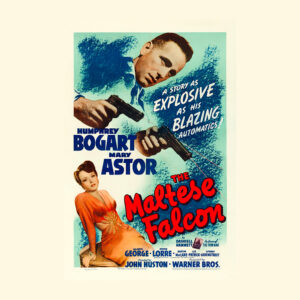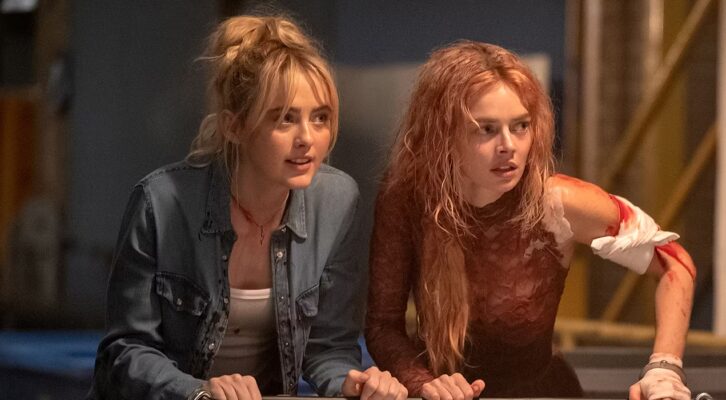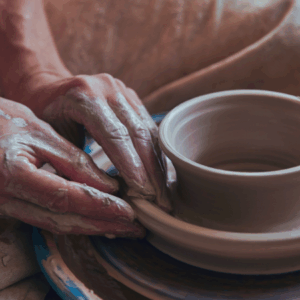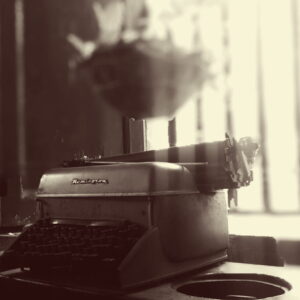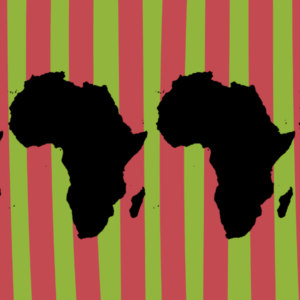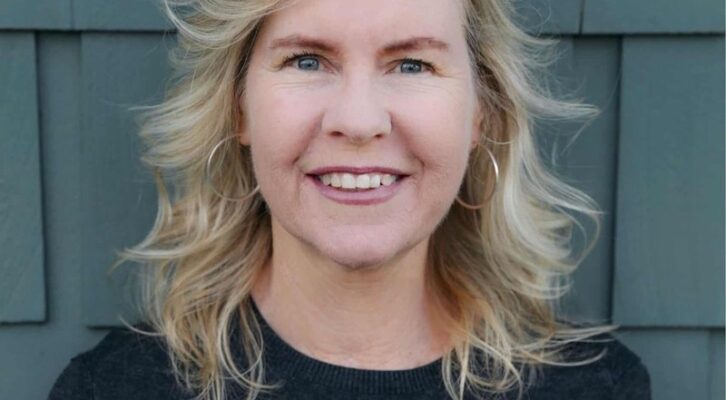
Susan Straight on Chronicling the Impact of COVID-19 in Fiction
Jane Ciabattari Talks to the Author of Sacrament
Sacrament follows in natural progression Susan Straight’s bestselling novel Mecca (2022), which revolves around three characters in that date-growing city in the Coachella Valley, including Johnny Frias, a California Highway Patrol officer whose family and friends are at risk from wildfires and Immigration and Customs Enforcement raids. Sacrament takes on the next crisis to strike the inland empire, COVID-19. (And Johnny Frias shows up again.) Straight’s focus in this new novel, her tenth set in San Bernardino and surrounding desert towns, earning her the title “bard of overlooked California,” is on the heroic ICU nurses who risk their lives and give up family life to fight the pandemic.
What inspired this novel? I asked Straight. “Sacrament starts three weeks after Mecca ends, in August 2020, when the COVID pandemic really took off again,” Straight explained via email. “I began it as several traveler nurses moved into my neighborhood, which is a few blocks from our local hospital. They lived in RVs parked in front of my friends’ homes, and two nurses, from Indiana and Texas, rented a room on my street. In the early evening, they’d walk past my gate on their way to night shift, and always stopped to visit, FaceTime their kids to see my sunflowers, and tell me stories. Three other nurse friends on the block would tell me stories after their shifts. I began with some of those vivid stories, of the ravages of the virus on the bodies of big, strong men, and their wives helpless on the phone.”
*
Jane Ciabattari: How did you settle on the title?
Susan Straight: I loved having a one-word title, with Mecca, which could resonate in many ways. I kept thinking of my friends whose husbands were in ICU, alone, with no one to deliver last rites, if they were Catholic, or even a last touch. Sacrament is a lovely word to say aloud.
JC: Sacrament revolves around two cousins from San Bernardino, Larette and Cherrise, who, along with two traveling nurses—four ICU nurses in all—are isolating in individual Mallard trailers in CamperWorld, three blocks from Our Lady of Sorrows hospital. It’s August 16, 2020, and they have been working since July 2 , 2020 to save patients in the early months of the pandemic, when the highly contagious, destructive virus laid waste to the land, and lockdown was in place. Strangely, it feels like a historic novel, so much has happened since. How does Sacrament mirror the experiences you and your family had during COVID?
I saw a white carriage and four white horses, followed by a procession of convertible lowriders, tops down, all playing the same song, and I was so moved I had to write that scene.
SS: The pandemic was all-consuming for my family and community. My next-door neighbor Mario was in the first 100 people in Riverside County, the second largest county in America, to get COVID. At 5 AM, I stood on my porch, and his wife stood on their porch, while Mario swayed and almost fell, again and again, on the sidewalk in front of my house, while the EMTs approached him in full hazmat suits, and no one could touch him. My neighbor’s uncle, who was a decorated Chicano motorcycle patrol officer, an inspiration for the character of Johnny Frias, died in November, and in December, my other neighbor, Jim Calderon, died in his home, and we watched him taken away while his wife sobbed on their porch. One early evening, I saw a white carriage and four white horses, followed by a procession of convertible lowriders, tops down, all playing the same song, and I was so moved I had to write that scene.
JC: Larette and her husband Grief, who has worked 18 years at the county Animal Control Service Division, both had COVID in May, with serious lasting symptoms. Now she is worried that their son Dante, 13, who is “obsessed with galaxies and space,” might get it. In July the ICU nurses are asked to move into the Mallard trailers to protect their families, who can visit from afar, keeping a six-foot distance. Was it difficult to retrieve all the rules and guidelines of early COVID years?
SS: No, it wasn’t—I took care of both my parents, who had moved into assisted living the week before the lockdown, so I knew all the rules, and my ex-husband nearly died of COVID, but my youngest daughter and I found him and had to test him from ten feet, which required a lot of shouting. My middle daughter and her husband were here during COVID, and they got it twice, so I am very good at nursing people through closed doors. I’ve had COVID three times, each time from taking care of a family member.
JC: The experience of ICU nurses is hazardous, tragic, draining. Your opening sentence tells us: “Larette woke up hearing the song. His fingers were pressed into her palm, not even the whole hand because Rudy Magana’s hand was too big, so she held his four fingers while she sang to him. The song his wife, Norma, had requested.” A gifted performer in local theater, she now sings for severely ill, often comatose patients, so they know they aren’t alone, songs their families request. It’s a comfort to their families. And haunting to Larette. These moments appear throughout the novel, emotionally charged interactions between the nurses and their patients. Are these based on anecdotal material?
SS: Many of the moments are based on stories told to me by my nurse friends, or my men friends and family who were hospitalized and remember some of what happened to them. But of course, novelists conjure and dream up the rest—Larette is someone who came to me way back in 2017, a woman who sang to her husband and whose life revolves around music, so that first few lines came easily. I love Marisol Manalang, who is my heroine here, as she’s like my many Filipina friends and neighbors who are medical professionals, with a very specific way of looking at the world.
JC: The regimens followed by these ICU nurses who work nights during the pandemic are strict, plus they are working for up to fifteen days without a break. How did you research these demanding schedules and protocols?
SS: I stood at the gate and listened to my neighbors and the traveler nurses. Their backpacks were their lives, and their camaraderie.
JC: The nurses create a community, including the manager of CamperWorld, with routines like Marisol’s chicken adobo and rice offered to all, sitting on stone benches during breaks, keeping watch on each other in case someone gets sick. This, plus the ongoing calls among family members, maintains a powerful sense of human connection and love. How important was that to your weaving together of this story?
SS: Nurses formed their own family units, and I kept thinking of my older male relatives talking about the trenches in World War II, about huddling together for warmth in the snow of the Korean War, and at night, while I was writing, all of it came together.
JC: Cherrise’s husband died in an accident eight years ago; her daughter Raquel, 15, is staying with her aunt Lolo in the Coachella Valley so she won’t get ill, but she’s resentful, and thinks her mother is putting the dying patients before her family. Grief and Dante want Larette to come home. She can tell Grief’s COVID related joint pain continues, just as she still has lingering shortness of breath and other symptoms. How did you develop these details about the tension the nurses feel between their families, their own bodies, and their challenging work?
SS: Our kids always think we put others, especially strangers, before them, if we’re humans who work in service, like nursing, teaching, social work, caregiving! It’s the stories all my friends and I tell each other, about how guilty we feel when we work long hours and our kids roll their eyes. But people didn’t know how long COVID really ruined so much of the body, back in 2020, and I’ve watched my neighbors and my ex-husband and others struggle for years with the damage. It took me a long time to be able to breathe right again—I imagined Larette climbing those stairs in the hospital.
JC: Johnny Frias, Grief’s best friend since high school, is off a twelve-hour night shift with the California Highway Patrol, back home after getting a teenage boy injured in a crash in Borrego Canyon to the hospital, when Grief calls to tell him a massive bull is holding up traffic. Johnny trades his Harley for his horse, Mano, and comes with his father on his mare, Jefa, who “moved cattle around like she was a queen and they were her subjects.” They arrive with lariats (and wearing bandannas against Corona) and round up the infamous 1500-pound bull named Cabron. Johnny overhears the people in the stalled cars. “’OMG, they look like fucking bandits in an old movie!’ Phones went up in every window.”
I stood at the gate and listened to my neighbors and the traveler nurses. Their backpacks were their lives, and their camaraderie.
After Johnny and his father pull off a miraculous job of capturing the bull, Grief has to keep Johnny from being arrested by San Bernardino deputy. Johnny begins to reach for his badge in his jeans pocket since he’s off-duty, and remembers he hasn’t done this for the past four years. “I never knew when a deputy or a driver or a random white dude on the street would claim I was reaching for a weapon—before he shot me.” What was the process of building this scene, in which a dangerous bull is wrangled by experienced cowboys who know what they are doing (and whose family has lived in this region since the eighteenth century) and encounter what could be a dangerous ignorance among the people witnessing the scene, especially law enforcement?
SS: That’s a great question! It was one of my first scenes to write, and I loved the tension. I have friends who are vaqueros, and two friends who raise longhorn cattle and bulls in remote canyons, so it was just my listening, again, and hanging out with them, and imagining Johnny and his father, who I loved so much from Mecca. Johnny rides his patrol Harley and his horse, but his father mainly worries about the world. They round up cattle all the time, and adding the scene with the deputy was, sadly, easy, from seeing this happen in my life.
JC: While staying with her great aunt Lolo, Raquel spends some time helping around the date farm, where the temperatures are up to 116 degrees and the crew, which includes Joey, who is her age, and his father, harvests at night. Later she runs away, with Joey’s help, making her own hazardous mistakes. How do you know so much about date farming? And teenage girls?
SS: My mother took me and my four younger siblings to a date farm when I was only six years old, as she is from Switzerland, always cold in a wooden house in the Alps, and she loved temperatures above 100. I never forgot the beauty, the cathedral-like quality of the rows of date palms, the intense shimmering heat. I’ve been reporting and writing from the Coachella Valley for thirty years, working on stories for magazines and newspapers, and have met so many date farmers, palmeros who climb the trees, pollinate the dates, and harvest. They’re all great storytellers, too. I just listen. Teenage girls? I raised three daughters. I’m not saying anything else!
JC: What are you working on now/next? Another novel set in your native inland empire?
SS: I’m halfway through my next novel, which is set partly in the same hospital, Our Lady, and around southern California. The main characters are a phlebotomist, who is the best at drawing blood from children, and her search for a daughter she lost; a tree trimmer named Poobah, from Rialto, who rescued her decades ago; and how their lives collide again when a murderer, in a coma, is brought by police to the hospital.
__________________________________
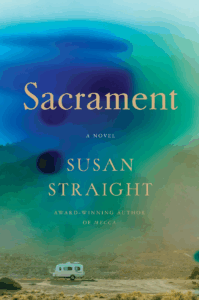
Sacrament by Susan Straight is available from Counterpoint Press.
Jane Ciabattari
Jane Ciabattari, author of the short story collection Stealing the Fire, is a former National Book Critics Circle president (and current NBCC vice president/events), and a member of the Writers Grotto. Her reviews, interviews and cultural criticism have appeared in NPR, BBC Culture, the New York Times Book Review, the Guardian, Bookforum, Paris Review, the Washington Post, Boston Globe, and the Los Angeles Times, among other publications.









